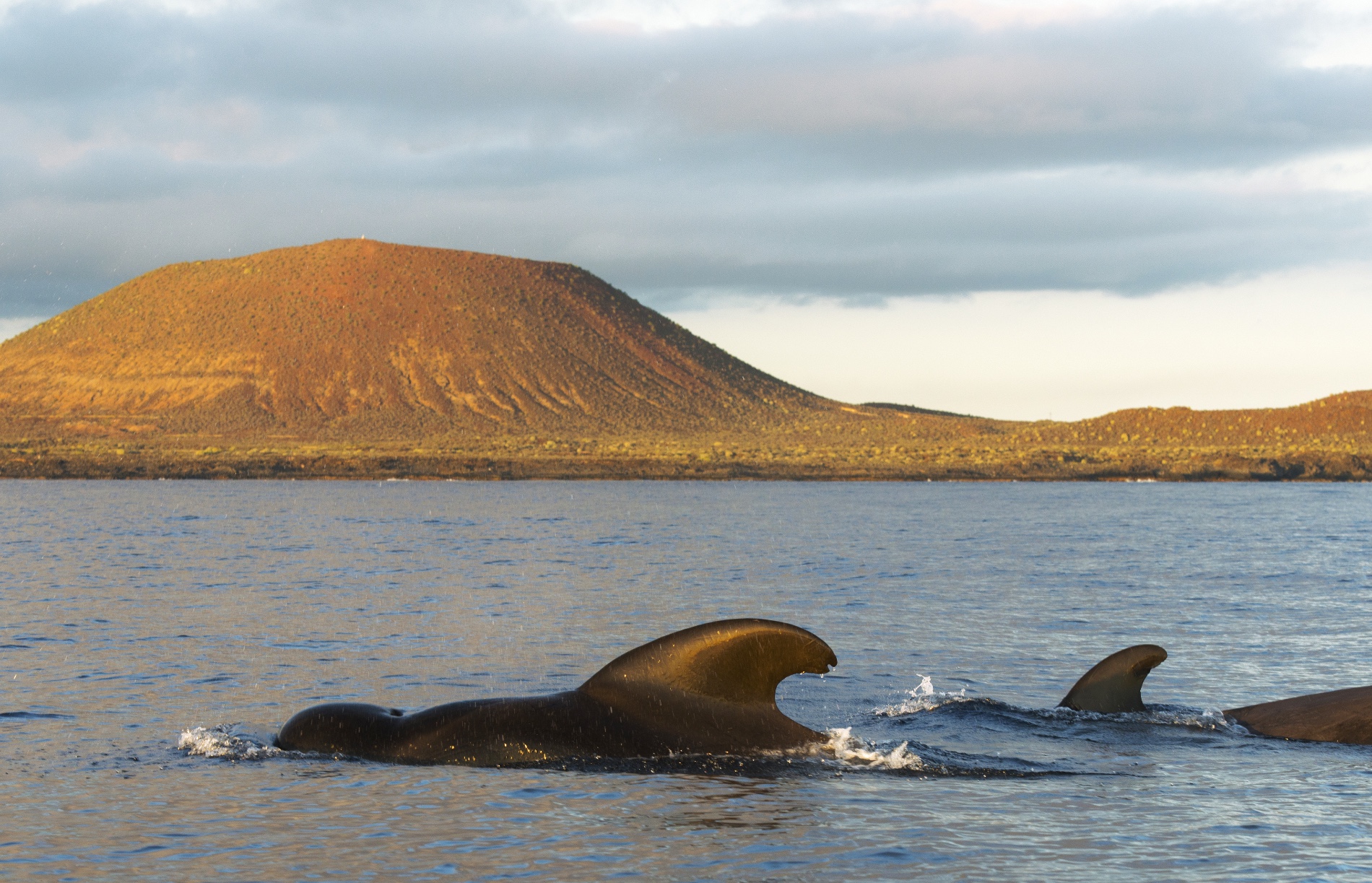The Canary Islands, especially Tenerife, provide suitable conditions to be home, or favourable migration stop, for many species of whales and dolphins. From the total 92 of cetacean species found in the world, 31 have been reported in the Canaries in the last 30 years.

Home of hundreds of whales and dolphins
The sun makes the deep blue of the sea shine even brighter and the fresh sea air blows lightly around our ears. The 7-metre sailboat swings from left to right in harmony with the waves as we move further and further away from the harbour in Los Gigantes. The clear weather opens the outline of the island of La Gomera, 50 kilometres from Tenerife. We sail to a point between the two islands, which, due to its underwater conditions, is a very popular territory for pilot whales and bottlenose dolphins all year round. Suddenly the captain’s voice is heard, and he points his finger at a spot in the water: “There’s something! Look, there’s movement in the water!”
27 different species of whale and dolphin
Is that a black dolphin? No. We quickly learn from our guide that this is not a dolphin, but a pilot whale, which can be clearly distinguished from a dolphin by its very large, curved fin. Slowly he dives to the surface, takes a deep breath and dives back down in a calm, steady rhythm. It paws its way along the boat, exhales breath, sprays a fountain and disappears again down into the deep blue.

Wildlife welfare on top of priority
Only a few arm’s lengths away from our boat, another, much larger pilot whale emerges. It lifts its head and looks in our direction as if it wants to greet us. “An old friend,” our guide explains. Our guide has been taking his boat out here for more than 20 years and is part of a small family business . As a trained marine biologist, he knows not only the place, but also its countless inhabitants, like the back of his hand. His boat has motion sensors so that he can avoid getting too close to the animals. Engines are switched off as soon as movement is detected in the water. Loud music and feeding the animals are strictly forbidden. We follow the rules and are happy to be part of a tour where animal and nature conservation is at the top of the agenda. As suddenly as he appeared, he disappeared again.
Snorkelling in front of one of the highest cliffs in Europe
From the deck of our sailboat, we have a breath-taking view of the sensational rock formations and cliffs of Los Gigantes. Their coves and grottos are particularly popular with divers, who are offered a fascinating underwater world. Of course, swimmers and snorkellers also get their money’s worth. The small platform at the back of the boat makes it very easy for us to get into the water. Snorkels, goggles, and fins are available in many sizes.
Dolphins jump only a few metres from the boat
After this refreshing break, we head back towards the harbour. Halfway back, we slow down again and almost come to a halt – our captain has spotted something. A school of dolphins is about 20 metres away from us. They dive, swim and jump. As suddenly as they come to the surface, they disappear again in the deep ocean. We were particularly lucky on this day to observe so many different sea creatures.

